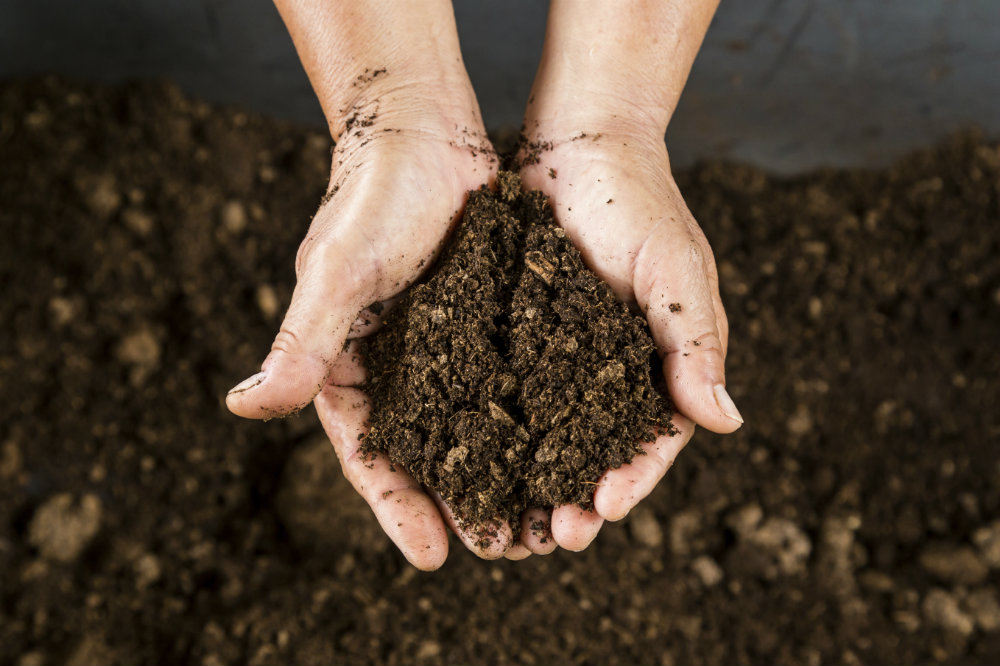When you own land, it's critical to know what kind of soil you have. Find out how to know your soil type and how to properly collect soil for testing.
Whether you're planning to build a house, put in a septic tank or plant a garden, it is important to know what kind of soil you have on your land.
But how do you find out? County extension offices will test your soil for little or no cost. You just need to send in a sample.
For more details on how to know your soil type, we spoke with Alyssa Puckett, county extension agent 4-H and Youth Development with Texas A&M AgriLife Extension Service in Polk County, Livingston,Texas.
How to properly collect soil
 Use a shovel to collect soil samplings, Puckett says.
Use a shovel to collect soil samplings, Puckett says.
“Go at least four- to six-inches into the ground, either in a grid or randomly,” she says. If the area is sloped, make sure you obtain soil from the bottom, middle and top part of the angled ground. Mix together all of the samples in a container. “You want to use a clean plastic bucket,” Puckett adds. “Don’t use galvanized or any type of metal or rusty container.”
The right way to prepare a soil sample
Once collected in a bucket, “Sift through the dirt with your hands and remove any plant residue, like grass,” Puckett says. “You want to test only the soil.”
Let the soil dry completely by spreading it on a newspaper. For analysis, you’ll need about a pint of dirt from your mixed-up soil.

Next step: submit your soil sample for analysis
To submit your soil sample, get a proper soil bag and form to mail it.
Bags to mail the sample and forms with information needed by the laboratory are available at extension offices. Staff also can direct you about the best place to send your sample once collected. Puckett’s office in Polk County often uses a lab at Stephen F. Austin State University because of its familiarity with East Texas’s acidic soils, whereas requests from central Texas are more likely to be sent to Texas A&M University.
 “It just depends on the client and the soil,” Puckett says.
“It just depends on the client and the soil,” Puckett says.
Analysis is inexpensive, usually in the $10 to $12 range.
The results: What a soil sample lab report will tell you
The basic test will tell you what type of soil in general you have (clay, sandy, loamy, etc.), the soil’s micronutrients (nitrogen, phosphorus, and potassium, which are the key nutrients for any plant), and the pH level.
The pH level tells you how acidic or alkaline the soil is and indicates how well a plant will be able to draw nutrients from the soil. The pH scales range from 1 to 14, with 7 representing neutral soils. Below 7 is acidic; above 7 is alkaline.
If you're planting to use the results to plant something, “what you’re planting determines what type of soil you want,” Puckett says. “Specify on the lab form what you want to grow. The people testing your soil will tell you exactly the information that you need.”
Recommendations might include use of lime or fertilizer to bring the soil’s pH where you need it to be. For instance, azaleas require a more acidic soil, while gardenias do not. Many plants prefer nearly neutral soil.
Plan ahead
Mail the soil to a lab for analysis four to six months before you plant. Lab reports are usually returned within two weeks, depending on demand, but implementing whatever it takes to bring the soil where it needs to be can take months.
“You can’t plant a garden in two weeks,” Puckett says. “It is going to take a little bit more time.”
























